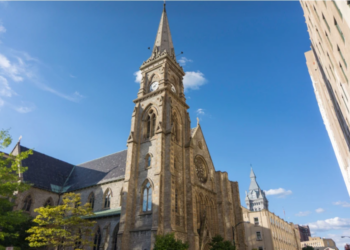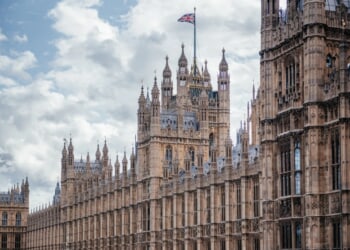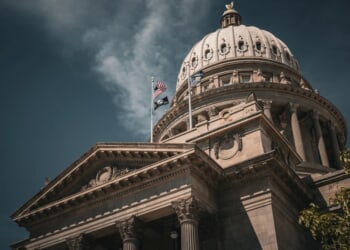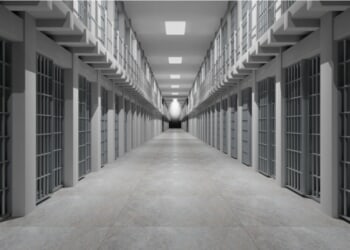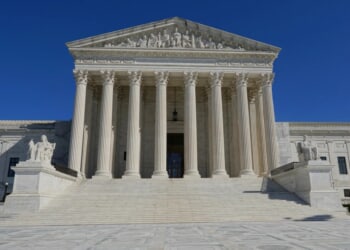Vatican City, Apr 9, 2025 /
15:07 pm
King Charles III is in Rome this week, but due to the cancellation of his state visit to the Vatican due to Pope Francis’ health, he missed a rather surreal opportunity to cross paths with another “Charles III” (at least according to the Jacobites), who is buried in St. Peter’s Basilica.
“Bonnie Prince Charlie” — the ill-fated Catholic Stuart claimant to the British throne — is entombed in marble splendor within the basilica, just a few steps from the front door.
The often-overlooked marble monument in the Vatican is marked by two sorrowful angels and a Latin inscription declaring the final resting place of “the last of the Royal House of Stuart.” Within it are entombed James Francis Edward Stuart and his sons, Charles Edward Stuart (better known as “Bonnie Prince Charlie”) and Henry Benedict Stuart.
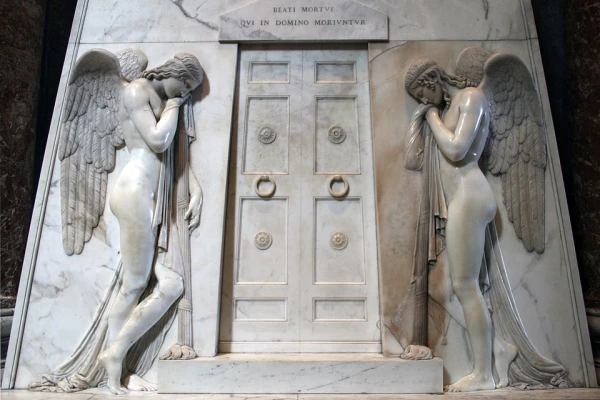
James II of England, a devout Catholic, was overthrown by the so-called “Glorious Revolution” of 1688, making way for Protestant rule. His son, James Francis Edward Stuart (James III and VIII), dubbed the “King over the Water” by the Jacobites and the “Old Pretender” by the Whigs, spent his life in exile in France and Italy asserting claims to a throne that remained elusive.
The Catholic Church provided refuge and support to the Stuarts during their exile. Pope Clement XI offered James III the Palazzo Muti in the Piazza of Santi Apostoli in Rome as his residence, where he set up a Jacobite court and lived with his two sons in Rome with his wife, Maria Clementina Sobieska, the granddaughter of the Polish King Jan III Sobieski.
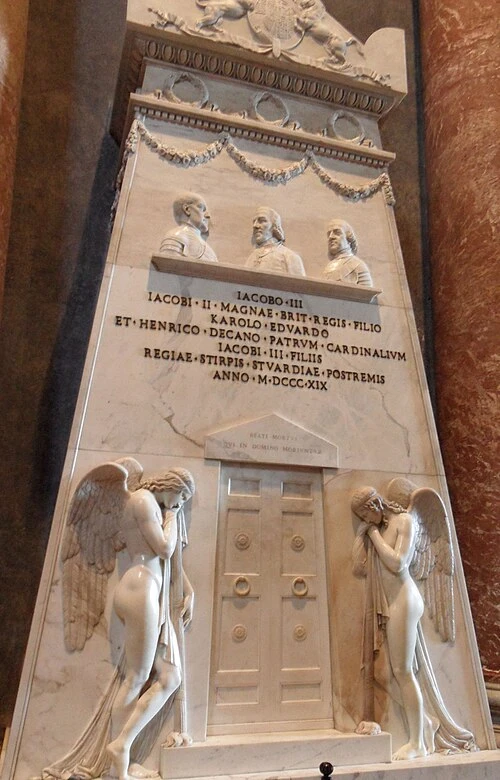
Their eldest son, the much-romanticized “Bonnie Prince Charlie,” led the disastrous Jacobite uprising of 1745 in Scotland, which ended in a rather unceremonious retreat. The younger brother, Henry Benedict Stuart, found his vocation in the Church, eventually becoming a cardinal.
Maria Clementina was known for being particularly devoted to prayer, asceticism, and charity in her last years. When she died at the age of 33, the pope had her interred in St. Peter’s Basilica in 1735 with full royal honors, including a procession from the Basilica of the Holy Twelve Apostles to the Vatican.
Maria Clementina’s tomb in St. Peter’s Basilica can be identified by her colorful oval portrait held up by marble sculptures of a cherub and a woman, an allegorical figure of charity, who holds up in her other hand a flaming heart.
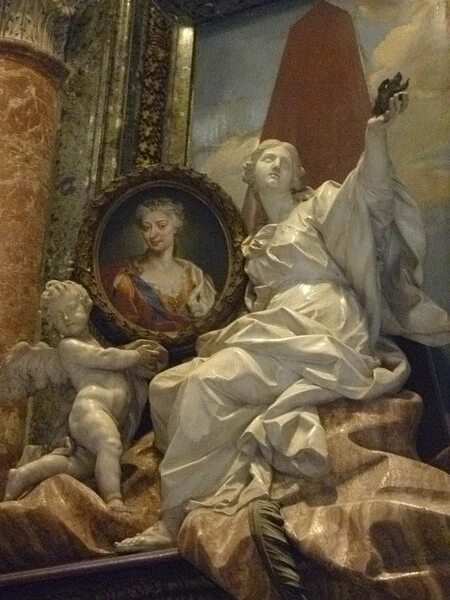
After James III’s death and royal funeral in Rome in 1766, Pope Clement XIII refused to recognize his son as Charles III and instead recognized the Hanoverians as kings of Great Britain in an attempt to engage with the Protestants. The womanizing Charles had had a daughter out of wedlock with his Scottish mistress. He later married but separated without having any more children. The Stuart line died with his brother Henry, the cardinal duke of York, in 1807.
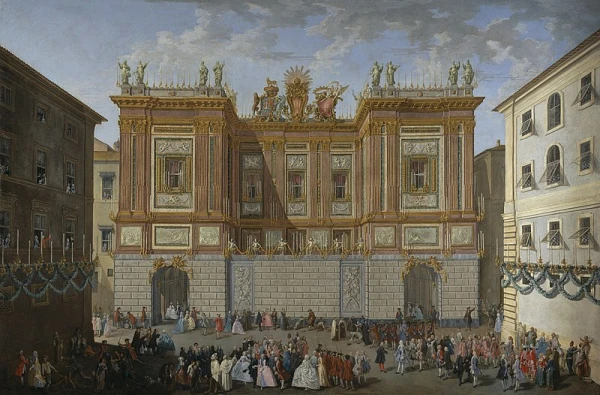
Recognizing their royal lineage, Pope Pius VII commissioned the renowned sculptor Antonio Canova to craft a monument in their honor erected in 1819. It is located near the basilica’s Baptistery Chapel and directly across from the monument to Maria Clementyna Sobieska.
Two centuries later, King Charles III’s state visit to the Eternal City this week has included waving crowds at the Colosseum, a historic speech to Italy’s Parliament, and a photoshoot in front of the ancient Temple of Venus with Queen Camilla to mark their 20th wedding anniversary.
While the king’s April visit to Vatican City was officially “postponed” at the request of Pope Francis’ doctors, the pope met privately with the royal couple on April 9, the Holy See Press Office announced, exchaninging good wishes on the couple’s 20th wedding anniversary and for the continued recovery of the pope’s health.
(Story continues below)
Subscribe to our daily newsletter
It could prove a helpful meeting for the British monarch given the recent statistics that young Catholics have surpassed Britain’s churchgoing Anglican population by more than 2 to 1 among Generation Z and younger millennial churchgoers, leading The Times to speculate whether the Catholic population could soon overtake Anglicanism in the U.K. for the first time since the Reformation.




